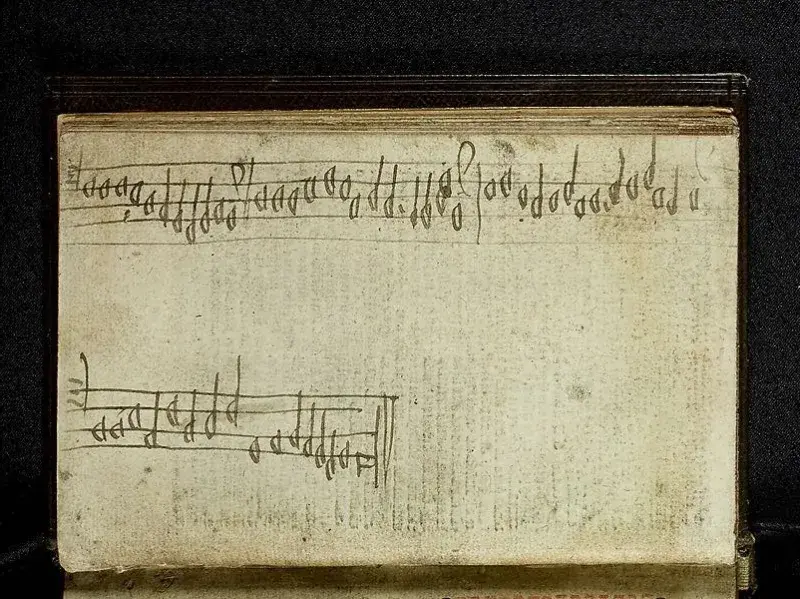Scholars from Edinburgh College of Art and KU Leuven in Belgium have been investigating the origins of the musical score – which contains only 55 notes – to cast new light on music from pre-Reformation Scotland in the early sixteenth-century.
Tantalising find
Researchers say the tantalising discovery is a rare example of music from Scottish religious institutions 500 years ago, and is the only piece which survives from the northeast of Scotland from this period.
The scholars made the discovery in a copy of The Aberdeen Breviary of 1510, a collection of prayers, hymns, psalms and readings used for daily worship in Scotland, including detailed writings on the lives of Scottish saints. Known as the ‘Glamis copy’ as it was formerly held in Glamis Castle in Angus, it is now in the National Library of Scotland in Edinburgh.
Musical score
Despite the musical score having no text, title or attribution, researchers have identified it as a unique musical harmonisation of Cultor Dei, a night-time hymn sung during the season of Lent.
The Aberdeen Breviary came from an initiative by King James IV who issued a Royal Patent to print books containing orders of service in accordance with Scottish religious practices, rather than needing to rely on importing texts from England or Europe.
Handwritten annotations
The researchers say the composition is from the Aberdeenshire region, with probable links to St Mary’s Chapel, Rattray – in Scotland’s far northeastern corner – and to Aberdeen Cathedral.
The discovery was made as researchers examined numerous handwritten annotations in the margins of the Glamis copy.
Of primary interest to the scholars was a fragment of music – spread over two lines, the second of which is approximately half the length of the first – on a blank page in a section of the book dedicated to Matins, an early morning service.
Puzzling discovery
The presence of the music was a puzzle for the team. It was not part of the original printed book, yet it was written on a page bound into structure of the book, not slipped in at a later date, which suggests that the writer wanted to keep the music and the book together.
In the absence of any textual annotations on the page it was not clear whether the music was sacred, secular or even for voices at all, the researchers say.
Independent melody
After investigation they deduced it was polyphonic – when two or more lines of independent melody are sung or played at the same time. Sources from the time say this technique was common in Scottish religious institutions, however very few examples have survived to the present day.
Looking closer, one of the team members realised that the music was a perfect fit with a Gregorian chant melody, specifically that it was the tenor part from a faburden, a three- or four-voice musical harmonization, on the hymn Cultor Dei.


